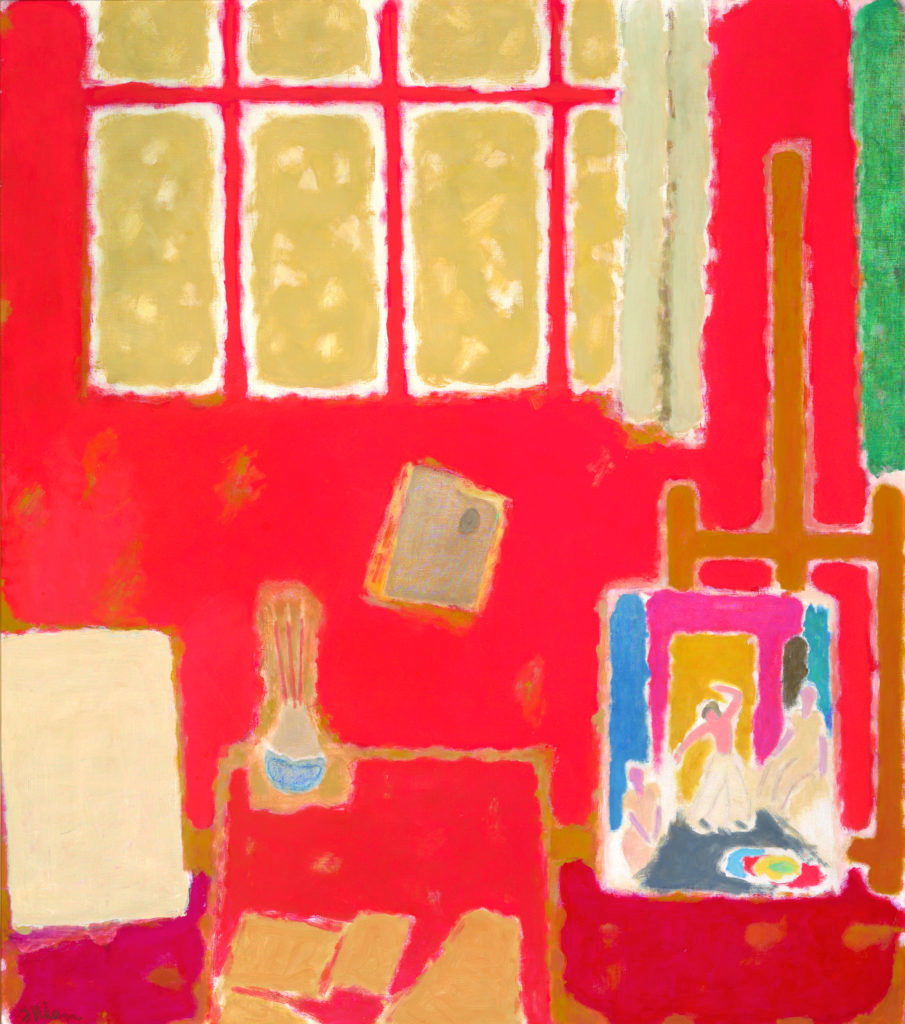Red Interior

Johannes Rian (1891–1981) began his artistic career uncommonly late. It wasn’t until 1927, when he was in his mid-30s, that he left his hometown Overhalla in Trøndelag – where he had been running the family farm for many years – and set off in the direction of Oslo. At the Academy there he received instruction from Professor Axel Revold and it was his teacher’s immense enthusiasm for Matisse that would come to have significance for him. For although Rian would never admit it himself, Matisse is probably the artist who, both directly and indirectly, had the greatest influence on his development and singular visual style. This influence can be traced on various levels, and in different periods, but is perhaps most clearly evident in Red Interior, which was painted in 1950. What is interesting in this connection is that Rian was the recipient of the Thomas Fearnley Memorial Grant and travelled to Nice in Southern France that same year. Here he saw a large exhibition of Matisse’s work which made an indelible impression on him and it is not unreasonable to think that he painted Red Interior on the basis of this experience. The painting has very definite allusions to Matisse’s famous Harmony in Red from 1908 (The Hermitage Museum, St. Petersburg) and Red Studio from 1911 (Museum of Modern Art, New York).
In Red Interior we are given a glimpse of the artist’s studio. Although we recognise the motif, it is hardly a realistic depiction of reality. Rather than giving an illusion of space in compliance with the rules of perspective, Rian has emphasised the picture’s two-dimensional character and creates a sense of depth through his treatment of colour. The various objects and shapes in the picture are consistently rectangular and have an axial placement on the picture plane. On the easel is a ‘picture within a picture’. The table in the foreground is seen from above (while the jar of paintbrushes, in accordance with cubist conventions, is seen from the side), and duplicates the studio window’s upright rectangle. The naked, unpainted canvas on the left and the palette situated at the exact centre of the pictorial space are the only things that diverge from this conspicuous symmetrical equilibrium. These two shapes lean at a slant towards each other; and thus belong together and become symbols for Art and The Artist. But the painting first and foremost ‘deals with’ the colour red and its peculiar expressiveness. Red Interior introduced an important phase in Rian’s oeuvre and pointed ahead to the non-figurative idiom that he would develop a decade later. Rian increasingly placed emphasis on formal means and experimented with the inherent potentials of the painting medium.
OWG